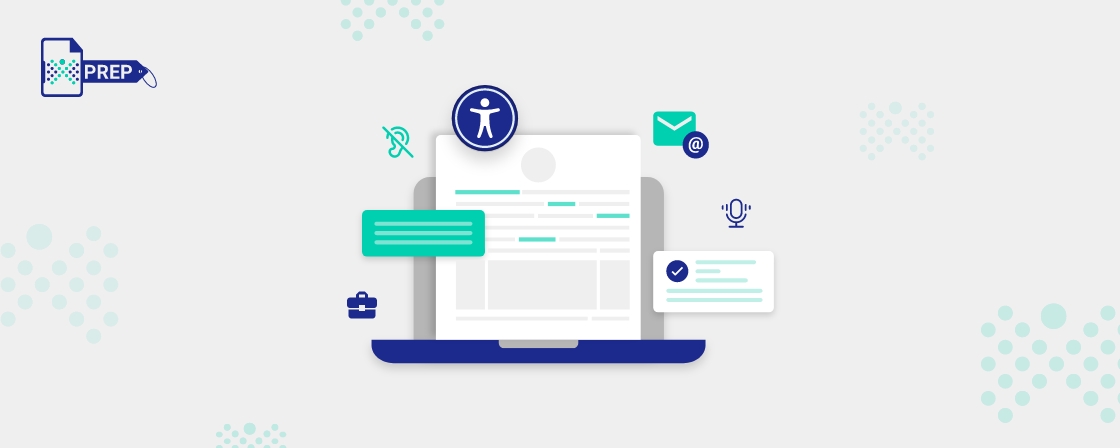How to Choose Accessible Fonts?
What are Accessible Fonts?
Factors that make a font accessible include:
- Enough contrast between the letters and the background color for easy differentiation
- Large font size for individuals with low vision or other visual impairments
- Sufficient spacing between letters and lines for no overlap or confusion between characters
The Importance of Fonts for Web Accessibility
Moreover, the number of people who won’t be able to access your website due to the lack of accessible fonts doesn’t stop just at vision impairments. Individuals with dyslexia may also be sensitive to certain typefaces, making it difficult to read inaccessible fonts. Statistics note that almost 40 million US adults have dyslexia. So, by making font accessibility your priority, you ensure that you reach more population and also preserve your brand reputation.
Guidelines for Choosing Accessible Fonts
The Fonts Need to be Widely Used
The Fonts Need to be Easily Readable
Allow Users to Control the Font Size
Allow Users to Zoom in on the Website
The Fonts Should Have Effective Colors
There’s no need to make custom fonts for an accessible website. Choosing from widely-used fonts like Calibri, Arial, Times New Roman, Helvetica, and Verdana can suffice as they have higher readability and are popular and widely accepted. By using a more popular font style, you can stay assured that the user experience for everyone reading will be smoother, and your readers can access your content the way you intended.
According to WCAG Guidelines 1.4, fonts should be readable for people with disabilities. This means that font accessibility should be your core concern, and there should be a clear differentiation between the background color and text. Further, avoid using fonts with decorative strokes because they aren’t easy to read.
Your website should allow your visitors to choose their font size instead of fixating on a specific size for easier readability.
Another aspect of font accessibility includes zooming in on a website page. When a reader zooms in on the website, they should be able to read the text without anything overlapping. To ensure a reader can zoom in and out of the webpage efficiently without the help of assistive technology, you can include a slider to help them reduce or increase the text size. Make it accessible on every device for enhanced readability.
Colors play a huge part in conveying information. For example, an error can be indicated with red color, disabled fields can be colored gray, and the presence of a hyperlink can be shown with a blue color. Also, have a good color contrast ratio of 3:1 for better accessibility and readability.
Which Fonts Should You Avoid?
- They are difficult to comprehend/li>
- They do not separate characters
- They look like shapes
- They may slow down the reader’s reading speed
What Font Size is Accessible?
WCAG Compliant Font Size
The ADA (Americans with Disabilities Act) forbids discrimination against people with disabilities and needs you to follow certain requirements for accessibility. It doesn’t explicitly mention the required font size, but there have been some accepted standards over the years for web design.
According to the Website Content Accessibility Guidelines (WCAG), an internationally accepted standard, font accessibility has been a major concern. You should ensure that the website users can make the text 200% larger. This applies to web designs and websites and may not include visual communication mediums like brochures, reports, and infographics.
What are the Accessible Font Types?
- Serif: The top and bottom of serif fonts have tiny decorative edges called serifs. While these are generally readable, some serif fonts are not, depending on their size. Generally, serif fonts in smaller sizes are not legible. Hence, you can find them mostly used for headings where the font size is larger.
- Sans serif: These fonts do not have the tiny embellishment on their top and bottom – hence they have the ‘sans’ in their name. They are slightly more readable than serif fonts since they’re less decorative.
What are Some of the Most Recommended Accessible Fonts?
- Tahoma (sans serif)
- Georgia (sans serif)
- Verdana (sans serif)
- Arial (sans serif)
- Book Antiqua (serif)
- Palatino (serif)
- Lucida Sans (Windows – sans serif) / Lucida Grande (Mac – sans serif)
- Helvetica (sans serif)

